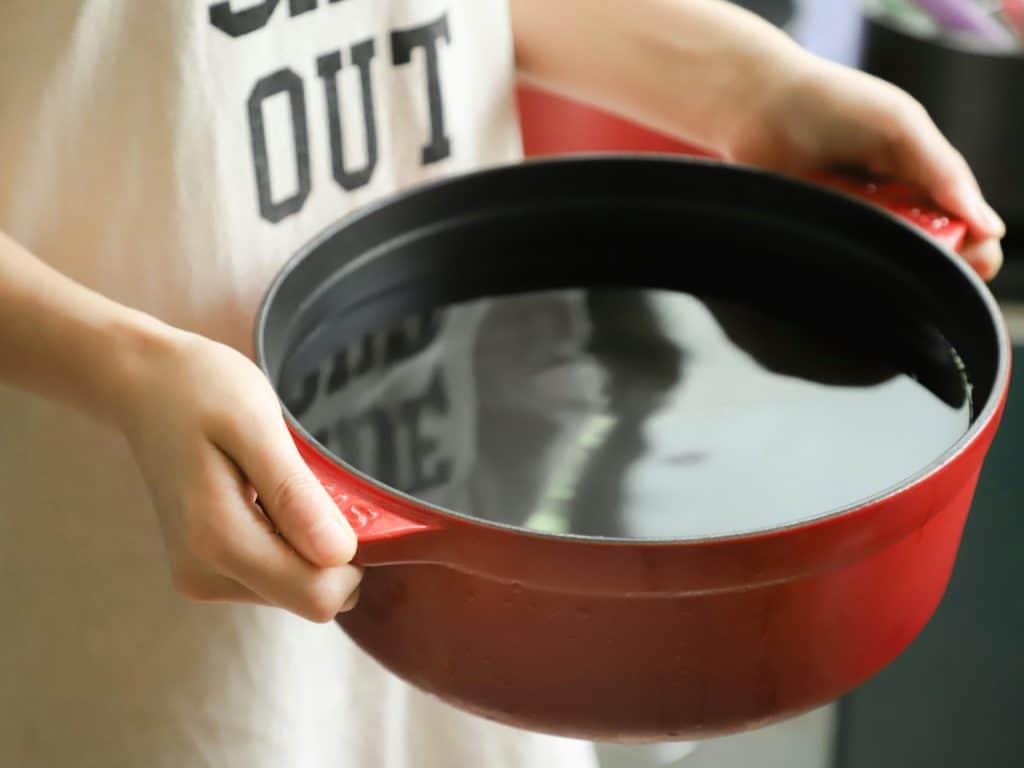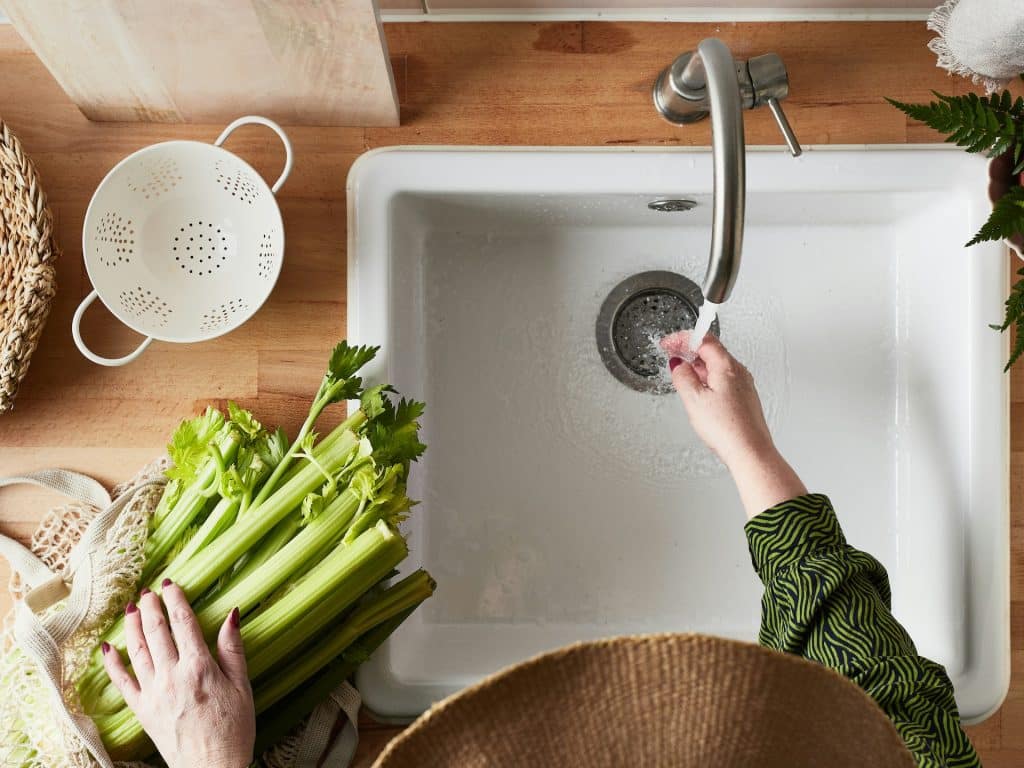
Blanching vegetables is an unusual process at home, but very common in hospitality, collective catering and the food industry. This heat treatment is especially applied to certain vegetables and, to a lesser extent, fruits. Beatriz Beltrán, professor in the Department of Nutrition and Food Science of the Faculty of Pharmacy of the Complutense University and honorary member of the Spanish Academy of Nutrition and Dietetics, explains to us what it is for and its impact on the nutritional value of foods. food.
What is blanching vegetables?
Blanching is a culinary technique consisting of “the brief cooking of food in water or other boiling liquid for a short period of time,” says the professor. It is applied only to soft vegetables, such as green beans, borage, green leafy vegetables (chard, spinach…), carrot julienne… It cannot be applied, however, to hard tubers, such as potatoes or sweet potatoes.
Blanching food does not necessarily mean that it is already cooked. Son intermediate preparations that are made in industrial kitchens or in restaurants before freezing, incorporate these vegetables into a stew or prepare them for a Maillard reaction, such as grilling, in which they acquire the golden tones that diners love so much. .
Vegetable blanching time
Time to blanch vegetables ranges from a few seconds to minutesdepending on the vegetable and what we wanted to do with it. The vegetables that best benefit from this heat treatment are those with tender parts, although it can also be applied to fruits, meats, fish…
To know the blanching times we must look for a manual or information about it.
Blanch or scald?
When blanching vegetables, we start from a cold term, that is, the food is passed through cold water before bringing it to a boil. It is done to soften them, although some catering professionals consider it a mistake because from the moment the vegetables are immersed in cold water until they boil, the nutrient leaching and other substances in the cooking water can affect the nutritional value of the food.
To prevent these nutrients from being lost, a kitchen trick is reuse cooking waterfor example, to make a broth.

What is the purpose of blanching vegetables?
Inhibit oxidation enzymes.
Blanched foods experience a inhibition of the activity of enzymes polyphenoloxidase, peroxidase and pectinase. These enzymes are on their surface and can affect the quality of the food during transportation and storage. Many vegetables oxidize when they come into contact with oxygen in the air. “By blanching, the organoleptic (color, flavor, texture) and chemical characteristics of the food are preserved at the same time,” says Beltrán.
Improve canned vegetables
Other benefits of blanching food is to improve the result in the preparation of preserved vegetables, since it expels respiration gases (O2 and CO2).
Culinary improvements
Blanching fruits and vegetables also offers other culinary advantages:
- secure a al dente texture of the vegetables, since the outer membrane is broken, but the food is not completely softened.
- facilitate peeling (for example, in tomatoes)
- enhance the color of some foods. When the outer membrane breaks, chlorophyll comes out and gives some vegetables such as green beans a very appetizing intense green tone. To preserve it as much as possible, in the industrial kitchen it is quickly placed in a chiller to immediately lower the temperature and preserve that color.
Food safety
Conservation function, since it also destroys or reduces the microbial load.
Step by step: how to blanch vegetables
Now that we know why to blanch vegetables, let’s see how it is done.
1. Prepare a saucepan or pot with water and bring it to a boil.
2. Add the vegetables, in pieces or whole, as appropriate, to the boiling water. The duration of blanching will depend on the use that is going to be given to it and the type of food.
3. Once that time has passed, remove the pieces from the water and cool them quickly, either with very cold water or by placing them in ice for a few seconds.
4. Once cooled, the food is ready to be used in the next treatment. Many times they are refrigerated or frozen, but on other occasions they go through other processes, such as peeling.
Why is it important to control blanching time?
Boiling time is the key to achieving good blanching. “If time goes by, the food will lose more nutrients and become overcooked. In this case we will not achieve the desired effect, neither in texture, nor in color, nor in flavor,» adds the expert.
On the other hand, if this time is short, “the enzymes responsible for the natural oxidative degradation of the food cannot be inactivated. In this way, the vegetables will lose nutritional and organoleptic quality more quickly.”

Are there different types of blanching?
Indeed. But above all these are used in the food industry. Every year the technique is perfected with the arrival of new devices that are increasingly easier to use and more precise. Scientific publications also show us improvements that affect the application in certain foods.
At the domestic level, there are several types of scalding of food:
- Blanching with liquids. Water is mainly used alone or with some additive, from baking soda to vinegar or aromatic herbs.
- Steam blanching. This technique minimizes nutrient loss.
- Scaling with the microwave. It requires less time and achieves greater enzymatic inactivation.
Possible disadvantages of blanching
Climbing can cause some nutrient loss. Certain vitamins and minerals pass into the cooking water, while water-soluble vitamins are degraded by heat. «In a varied diet, in which foods from all groups are present, subjected to different culinary processes and maintaining a proportion of these uncooked, the loss of nutrients that blanching entails, if done correctly, is small and does not affect to the general quality of the diet,” explains the expert.
Regarding changes in texture, in some foods it can be an advantage for certain foods, such as green beans. Others, like zucchini, can become too soft.
A trick: blanch the avocado
One of the most common tricks to prevent avocado from turning brown when oxidized is to spray it with lemon. If you do not want to add that citrus flavor to the recipe, there is the possibility of blanching it.
Beltrán describes the process like this: “Once peeled, immerse it briefly, for a few seconds, in boiling water. Next, place it in an ice bath until it cools. Take it out and dry it for convenient use.”
Do blanched foods last longer in the refrigerator at home?
Our house is not a restaurant, nor the kitchen of a hotel. This means that certain common processes in these establishments, where large volumes of food are worked with, do not make much sense at the domestic level. This is what happens with scalding.
Although the food could indeed last a little longer, due to enzymatic inactivation, Beltrán questions its usefulness at the domestic level. “The food in the refrigerator at home is usually consumed in a short period of time. By taking care of the purchase planning we can prevent vegetables from aging too much in the refrigerator. Another thing is at the level of professional catering, where it is interesting to have ingredients prepared in this way to later cook faster,” he explains.
Should fruits or vegetables be blanched before freezing?
Beatriz Beltrán advises this. “By blanching we inactivate the plant enzymes that continue working even when the food is frozen. It is very practical, especially when we get a large amount of vegetables that we will not be able to consume right away,” he concludes.
The ALDI Council
In the kitchen, don’t take risks. Whenever you handle hot utensils or foods, do so with protection to avoid burns.

Beatriz Beltran. Member of the Body of Academics of the Spanish Academy of Nutrition and Dietetics. Hired Professor, Doctor Department of Nutrition and Food Science of the Faculty of Pharmacy at the Complutense University of Madrid. Doctor in Pharmacy from the Complutense University of Madrid (UCM), she is currently a contract professor at the Department of Nutrition and Food Science (Faculty of Pharmacy, UCM). He is a member of the recognized group of the UCM-Gastrointestinal Health. With more than 20 years of teaching and research experience, her research work focuses on the evaluation of the nutritional status of groups. Innovadieta collaborator. www.ucm.es/innovadieta/ Instagram @bbeabel







